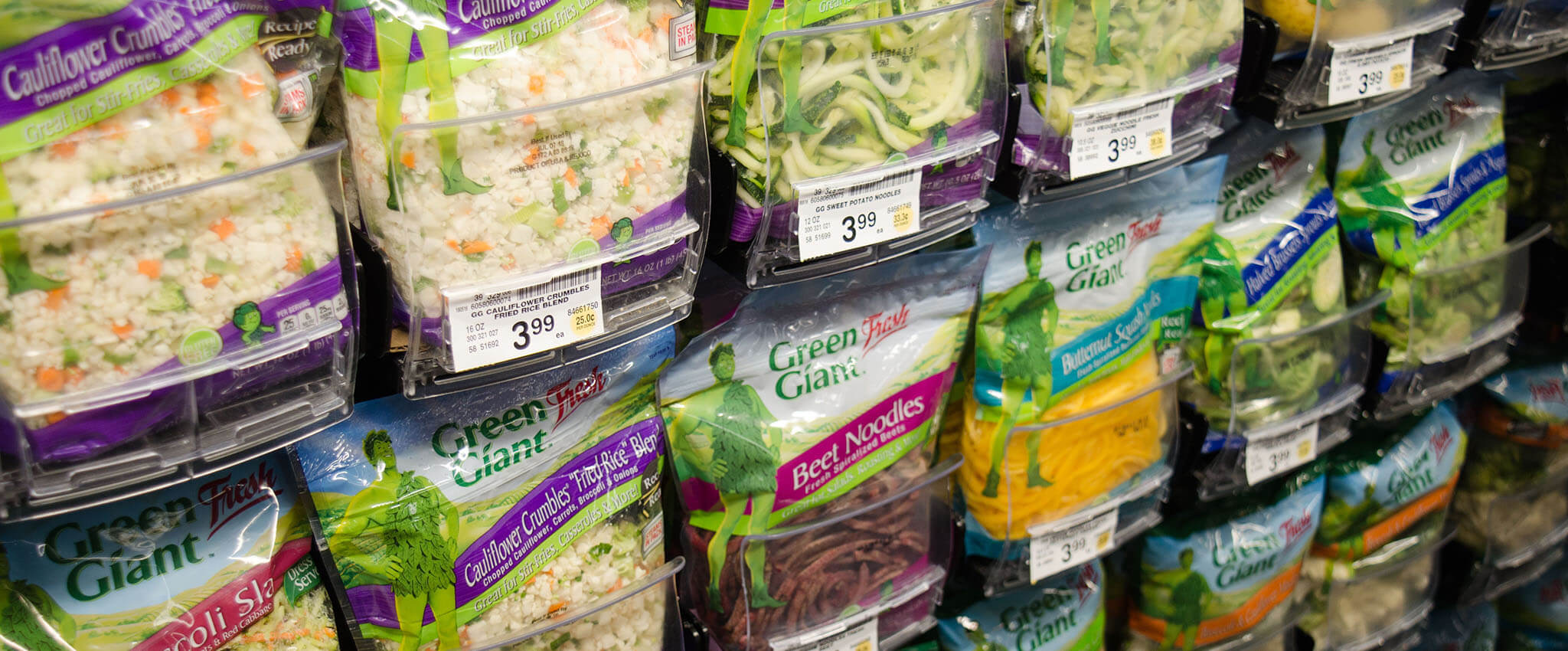People don’t typically settle for unsatisfactory. Take grocery shopping, for example. When a package of bagged salad is even just slightly browned, it’s highly unlikely that a shopper will take that item off the shelf. Same thing with a peg hole tear on a bag. Shoppers may instinctively view that product as substandard, even if the food itself inside the packaging is totally intact.
That all leads to shrink, which in the simplest of terms is wasted product. In the grocery business, where margins are typically razor thin, minimizing or reducing shrink is a key component to profitability.
In order to cut shrink, it’s best to first understand what causes it. In short, improper product rotation and damage are the main culprits. Rotation errors contribute to approximately 8% of total shrink, while damaged or unsalable goods make up about 4%, according to a retail research study conducted by FMI and The Retail Control Group.
The true breadth of shrink is two-fold: it’s measured by the volume of value-diminished product per store as well as the number of stores in a chain. Grocers normally estimate shrink to be between 1% and 5%. This may seem like a small fraction at surface level, but when multiplied across chains, the cost really adds up!
Perishable products, such as produce, are more susceptible to shrink—considerably more so than frozen or dry goods. According to the FMI study, 65% of all store shrink and 38% of total-store sales can be attributed to perishables. According to FMI, meat departments are the biggest contributor to total store shrink, at 18%, or an average of more than $90,000 in a store’s annual profit loss. Shrink in produce, which is about 16% or total shrink, can cut profits by $80,000 or more per store per year.
George Grubb of Retail Space Solutions, said shrink is very controllable, “if you’re willing to address it.”
“Our pusher systems move products forward, and product rotation is key,” said Grubb, Retail Space Solutions Director of Mideast Sales. “Even if shrink is in the ‘conservative’ 5% range, at the end of the day, that’s a lot of money on the line. It’s definitely a multiplier effect.”
Grubb warns, however, that pusher systems can only prevent so much shrink. “There are two major dimensions when it comes to preventing shrink,” he said. “First, there’s proper installation and usage of pusher systems, and the other, store staff members need to stay on top of inventory.”
“Pusher systems help immensely with inventory management, but it takes a real person to understand whether a product is damaged and needs to be rotated or moved.”
As grocers work to distinguish themselves from the competition, they are becoming increasingly focused on enhancing and expanding their perishable departments. According to Grubb, the produce section typically sets the tone for how fresh a store’s brand is perceived.
“Overall quality, freshness, variety and availability all contribute to a strategic advantage,” he said. “But if these factors are not closely managed, they can contribute to excessive shrink—and potentially lost profits.”
The innovative pusher systems from Retail Space Solutions are designed to help prevent shrink. The technology behind the pullout trays makes product rotation simpler, as well as prevents torn bags or ripped packages—both major contributing factors to shrink.
With pusher systems installed, stockers can quickly identify which products need to be restocked or rotated. When products are visible and the freshest they can be, customers are happy, which means profits rise.
